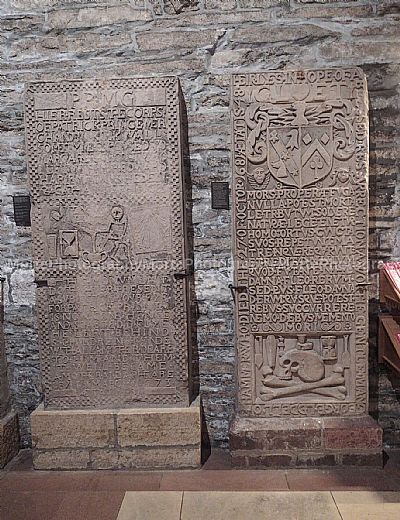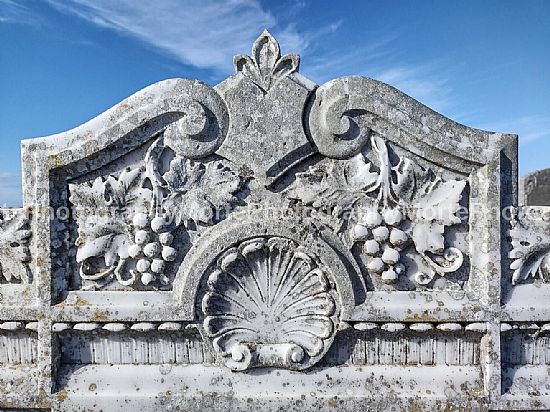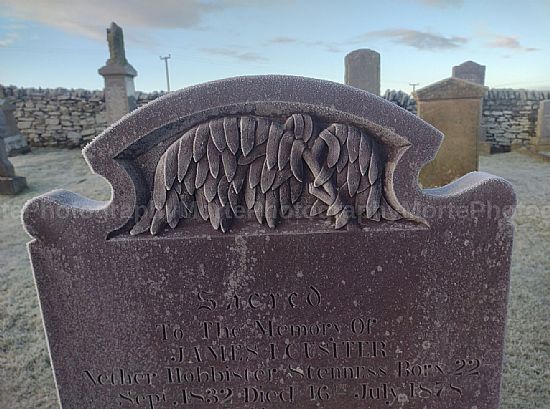Walking Amongst The Gravestones
Grave markers are an important part of our heritage and deserve to be treated as such. They reside in a landscape of both poignancy and sadness, their inscriptions and symbolic carvings reflecting the lives, the beliefs and the attitudes to death of past communities and individuals. These symbols usually possess special meanings to those buried there or transmit messages to those visiting, acting as subtle reminders of the deceased or perhaps offering advice to those remaining behind. In turn they provide a window into our ancestors' past thoughts and deeds, together with a rich seam of archaeological data for the avid researcher. A researcher like myself. Hello, my name is Lorraine Evans, a Mortuary Archaeologist and Death Historian, specialising in non-conformist burials, funerary art and architecture, and I would like to take you on a journey throughout the remarkable world of mortality symbolism. But first, a little back story.

St Magnus Cathedral, Kirkwall, Orkney
For some years, due to a serious health issue, I found myself unable to travel abroad to continue my PhD research and subsequently found myself forced to look a little closer to home for archaeological inspiration. In truth, although acutely aware of the vast richness of Scottish archaeology as a whole, with a heavy heart I believed that the upcoming years would be both a professional and personal low-point for me. Oh how wrong I was! For it soon became apparent that my new world was full of archaeological wonderment in the guise of local burial grounds and graveyards. I shall kerb my zeal somewhat, but suffice to say I became enchanted, some may argue a little obsessed, with this enforced chapter in my life and I soon found my days consumed with a wide variety of funerary art and architecture, in the guise of skulls, skeletons, coffins, angels, heraldic emblems, Victorian mourning sculpture, much of which harken back to the lands of ancient Egypt and Greece, as well as grave slabs, mausoleums and commemorative wall plaques. Nonetheless, my immediate joy was tinged with an ever-growing sadness, as it soon became apparent that these wondrous environments were in an appalling state of decay, these ancestral gems disappearing at an alarming rate. A worrying state of affairs, and one that gave me many sleepless nights. But what could I do? After much consideration, rather than sit idly back, I decided I would start to photograph and record the tide of destruction and, hopefully, bring the plight of the stones to the eyes of the masses. As such, in the autumn of 2013 Morte Photography and Research was born.

Warbeth Cemetery, Stromness, Orkney
Over a decade later, I now find myself excitedly awaiting the opening of my new exhibition, in the upstairs gallery at The Orkney Museum. It has been quite a few years in the making. Entitled ‘Symbols of Mortality - An Exploration of Orkney’s Funerary Art and Architecture, the exhibition will not only present some fine examples of commemorative monuments to be found in Orcadian burial sites and cemeteries, in photographic form, but it will also reveal some of the secrets behind St Magnus Cathedral’s remarkable set of gravemarkers that currently adorn its lower walls, and the odd one that isn’t readily on show to the public. In essence, the exhibition will explore what symbolism actually is, its evolution from the sixteenth century onwards, how it works within Orcadian sites and can it truly be trusted, together with its subtle usage in political shenanigans, social climbing and enhancing one’s relationship with God. Moreover, not forgetting how later gravemarkers were utilised to communicate love's bond beyond the grave, in combination with a plethora of hidden meanings. A few, rather special, related artefacts will also be on display.

Stenness Cemetery, Stennes Orkney
It is my fervent hope that each visitor to the exhibition comes to the realisation that Orkney’s graveyards and cemeteries are not just for the dead, a place simply to bury our loved ones, but are for the living too. They are wonderfully versatile spaces, they are there for all of us to visit, to appreciate and to cherish. They are there to educate us, to comfort us in times of loss and to provide peaceful meditative places to contemplate one’s own life, and of course mortality. Orkney’s graveyards and cemeteries are not dark, dreary places, but are sites of light, beauty and freely accessible to the entire Orcadian community. With a newfound appreciation, and understanding, of the stories and meanings behind the monuments on display, why not pay a visit to your local graveyard. A positive and humbling experience, not to be missed.

©2025 Lorraine Evans
